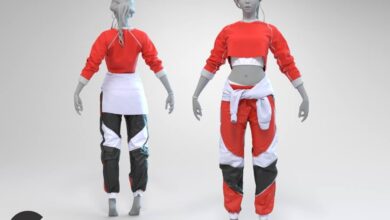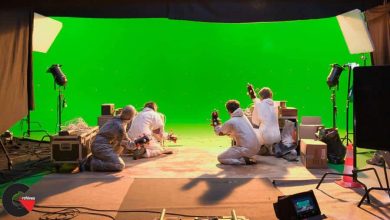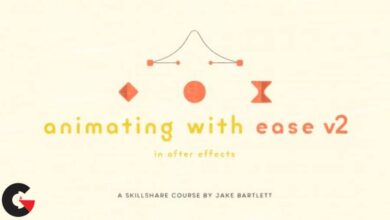CGCookie – Fundamentals of Dynamics
 Fundamentals of Dynamics
Fundamentals of Dynamics
Fundamentals of Dynamics : This course introduces you to world of dynamic simulation! Things like smoke, fire, soft and hard falling objects, fabric, pouring liquids, and more – All of this is accomplished with dynamic simulation in Blender. The key is that the computer does most of the work for you, as opposed to manually having to animate super complex motion like cloth blowing in the wind. Dynamic simulation is a powerful asset in the digital artists’ toolbox.
Dynamic Simulation is one of the most “magical” things we can do with Blender. In short, it’s a way to create complex procedural animations that mimic physics. If you’ve taken a high school math class, you’ll understand that physics calculations require a lot of math. Fortunately, we don’t have to do any math in order to make our models bounce, shatter, splash, and squish – Blender does that math for us! We just give it input materials and Blender does the rest. In this course we will be taking an introductory look at the nine types of dynamic effects that are available in Blender:
- Particles: Dust floating in the air, snow falling from the sky, sparks from a welder, and so much more. This type of effect involves the simulation of large quantities of small bits; i.e. particles.
- Hair: Exactly what it sounds like.
- Force Fields: Blender objects that mimic real-world forces like gravity, magnetism, vortex, etc.
- Rigid Bodies: You know when a Jenga tower falls? It’s like that: The simulation of rigid, non-deforming objects.
- Cloth: Also, what it sounds like – The simulation of fabric.
- Soft Bodies: In contrast to rigid bodies, this kind of simulation accounts for deformation of objects.
- Smoke: The simulation of smoke and fire! Muahaha
- Fluid: Liquid simulation like a pipe gushing water for example.
- Dynamic Paint: Think of this like writing with your finger on a foggy mirror. This is an interesting simulation genre that interprets object-to-object interaction into surface information like vertex weights.
lB6MwSwNNIYYHz66UqInBRH/video%204/34052
Direct download links 1.3 GB :
Direct download link reserved for subscribers only This VIP
Dear user to download files, please subscribe to the VIP member
- To activate your special membership site, just go to this link and register and activate your own membership . >>>register and activate<<<
- You can subscribe to this link and take advantage of the many benefits of membership.
- Direct downloads links
- No ads No waiting
- Download without any limitation ، all content in website
CGArchives Is The Best
Review
Review
Review this tutorial
 Fundamentals of Dynamics
Fundamentals of Dynamics




